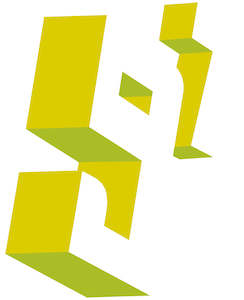About Design and AI Writings SxD Blog
White Papers
Social Interaction Design White Papers
Summary: These white papers are a series of social interaction design guides, design frameworks and approaches, and studies (with some some screenshots) on the design of content in social software and social media sites. Papers tackle a variety of issues familiar to the development, information architecture, navigation, UI, user experience, interaction design of social media, online communities, web 2.0 applications, badges, widgets, and so forth. The papers describe what appears on the screen, how it structures content and provides for social navigation and member presence, how users and communities take shape and how their contributions become social practices of a new kind. The white papers apply to social software design, software research, and the design of social media, user generated content sites, and web 2.0 in general.
Download Social Interaction Design and the User Interface 2006, 8M pdf.
A preliminary approach to Social Interaction Design issues, and methods of analysis for the designer of social software, online communities, social media, and any other communication technology that involves social as well as user practices. Using several social software sites as examples (Tribe.net, MySpace, Friendster, FastCupid personals, Flickr, and Typepad blogging), I explore the basic premise that in social software, all design choices inform user communication and interaction.
Excerpt: From the introduction and table of contents
Introduction: Social Software
Be it a passing fad or lasting innovation, social software stands at a technology frontier. That frontier takes form as an interface between the technical and the social, and for the designers and developers who build social software, it presents some distinct challenges. Social interface issues can be far more difficult to deal with than conventional user interface matters, simply because the interaction of technology, users, and by implication, communities, involves interdependencies that exceed the reach of conventional design techniques. Technologies that are used to mediate interactions and enable communication distort and transform basic face-to-face conventions. It's those effects, and the new practices they engender, that we're here to explore with this paper.
Technically speaking, social software combines communication tools mapped to a web front-end and internet-enabled back-end. To users, it's a hybrid of online community features, dating services, classifieds, events calendars, social networking, job opportunities, and more. Most social software systems today are branded (e.g. myspace, Tribe, Friendster, LinkedIn, Orkut, to name only a few), but off-the-shelf components and standards-based solutions suited to blogs and content management systems are rounding the corner. Some systems (e.g. Tribe) emphasize the social; others the networking (e.g. LinkedIn). What these systems have in common, however, is their desire to bring the power and flexibility of computing and networking to the problems of connectivity, communication, and information transmission.
Social software takes its inspiration from social networks, which claim to realize the inherent structural and systemic dynamics of networks in general. In brief, network relations theory values relations over individual units, and seeks to uncover the power of scale, communication, and transformation. The theory validates the common sense notion that we get all manner of things done through our social networks. Whether social software is a reflection of an emerging internet generation—mobile, connected, and networked—or a timely convergence of technologies, is beyond the scope of this discussion. Either way, social software seems to resonate with cultural trends. It's not just a genre of software applications.
A designer's work is grounded in the evolution of user practices and, in our case, of social practices in particular. Of course, technologies don't make things happen, users do. But technologies work only to the extent that their functions properly engage common practices. Today, the internet, computing, wireless and more are changing our practices of communication and interaction: how we date, get jobs, find jogging partners, get rides, trade music; to name a few. Activities from pastimes and games to rituals involve less personal interaction than ever. The culturally-coded practice of meeting and getting something done while also acknowledging and validating the other, face to face, is increasingly unnecessary. Social software is one current suite of applications and products through which we expand our world while compressing our participation in it.
It's the designer's job to build the technology (or application) so that its users understand it with as little confusion as possible. User practices are anticipated, and designed into, the technology. This becomes more difficult with social software because social relations are inherently complex. It's much easier to design a one to one computer-user interaction than it is to anticipate how a whole community of users will react to a new feature. That is the reason for this paper: inasmuch as social interactions contain system, structure, events, process, communication, and more, we can demystify social software. And we will try to, here.
Table of Contents
Table of Screenshots 3
Introduction: Social Software 5
A Word on my Approach 6
A Case for Social Interaction Design 6
Basic questions 7
System Theme, or What's Going on Here? 8
MySpace as the practice of presence 8
System Architecture and Structure 10
Themes and Action Systems 11
Time and Temporality 13
Social Interaction at MySpace 15
Home pages set the theme 20
Talk Systems 23
Communication and Interaction 23
System communication features 25
Getting seen: online dating 33
Interaction 38
Messages and Mail 42
People 51
Profiles 51
Members and Groups 61
Self-presentation 62
Roles 63
Networks, Relationships, Connections 65
Browse, Search, and General UI 80
Value, Metrics, Meaning, & Dependencies 80
Browse 82
Search 91
Tagging 99
Conclusion 106
